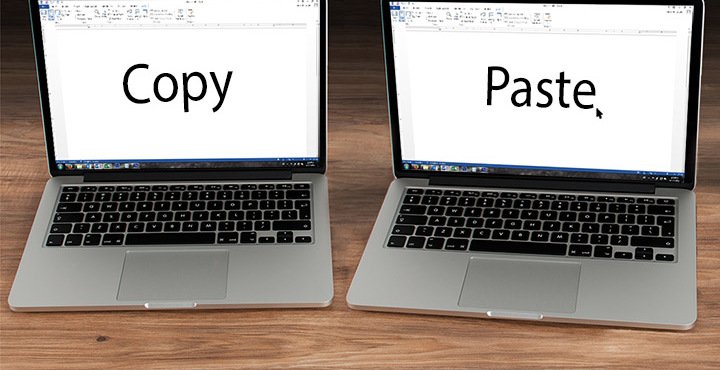Are you prepared to cite every type of resource you reference in your academic career? You must be totally aware of any danger that might befall you, knowing everything from when to use italics to how to deal with missing information. Do you have true unagi?
Danger is everywhere, but as long as you are prepared, you won't have to worry. You can become truly aware by reading our handy guide. First, we'll help you identify when you need to cite a website, and then we'll show you how to cite a website. It's time to achieve unagi!
When to Cite a Website
 How can you determine whether the information you've found is accurate and reliable? To know this, you need to establish the site's credibility.
How can you determine whether the information you've found is accurate and reliable? To know this, you need to establish the site's credibility.
The first thing to look for is the site's publisher. You can usually find this by checking the domain name. Another easy way to determine a website's credibility is by looking at the suffix (e.g., .edu = educational, .com = commercial, .gov = government, .org = non-profit). These suffixes can help you determine the site's main purpose and intended audience. Commercial sites, for example, vary in their credibility, while education and governmental websites are nearly always authoritative resources. However, be cautious, as websites may obtain misleading suffixes.
You can also look for information about the author. The site itself should contain an About the Author link somewhere, even if that author is a corporate author and not a single person who authored the article. If there's no information at all, you should be a little apprehensive about the source. If the author is provided, look for expertise, education, and credentials. Try a Google search, but remember that many authors may exist under the same name. Think about what sites are associated with the author. Are they educational or commercial? In addition, you may be able to determine any biases that might exist.
The next step is to dive into the actual information that you are citing. Determine the article's timeliness in terms of the publication date and any updates. You may also want to check if the author has cited any sources. If they haven't, be a little wary. If they have, you can go further down the rabbit hole and determine whether these sources are reliable by following the steps listed above.
Now, look at all of the facts together. What do you think? Is this source a good fit for your purposes? If you're still unsure, consider consulting a librarian (or a professor, if you are a student).
How to Cite a Website
Now that you've established an appropriate and credible source, you can look into citing the website. Different style guides have different requirements for how to cite a website, so always refer to your preferred or required style guide for updated information or variations between institutions.
The biggest problem to overcome in citing websites is usually a lack of information. Don't be lazy, or you could run into issues with plagiarism! List as much information as you can get your hands on. You may have to hunt for quite some time for the required information. If you have to hunt too long, though, consider finding another, perhaps more credible, source.
Without further ado, let's look into how to cite a website in the major style guides.
APA
Thankfully, the American Psychological Association (APA) has a straightforward approach to citing a website. Here's the format to follow:

Here's an example using (mostly) real information:

(As a caution, remember that Wikipedia is a great place to start doing research, but it should not be used as a source. This is because it is nearly impossible to determine the real credibility of the authors. We've used it as an example here just for fun!)
If you are citing an entire website, provide a URL that links to the home page. In addition, if no date is available for the document, use (n.d.), meaning no date.
MLA
Unlike APA, Modern Language Association (MLA) style does not require the use of URLs. However, some instructors or editors will still ask that you use a URL. So, to include a URL, place it inside angle brackets after the access date. Here is the template you should use when citing a website in MLA:

Here is an example using MLA style:

Along with the use of n.d. to signify no date, like in APA, MLA also uses n.p. to indicate that neither a publisher nor a sponsor name has been provided. In addition, if an entry asks for page numbers but none are provided in your online source, use n. pag.
Purdue Online Writing Lab suggests that writers "maintain personal copies of electronic information." If you're working on a long-term or very important project, print out webpages so that you can keep your own copies, as websites change often. Keeping websites for future reference will not only allow you to look back on material, it will also give you proof should anybody wish to see a webpage that is no longer available online.
Further, MLA has more specific rules for how to cite a website. For example, citations are different when citing an entire website, citing a course website, or citing a page on a website.
Citing an Entire Website
Make sure you list the date on which you accessed the website, as information may become unavailable as the page is updated.


Course or Department Website
Give the instructor name. Then list the course title (or the school catalog designation for the course) in italics. Give appropriate department and school names as well, following the course title.

A Page on a Website
For an individual page on a website, list the author or alias if known, followed by the information covered above for entire websites.

Chicago Manual of Style
Chicago Manual of Style has one main rule for how to cite a website: the footnote and the bibliographical entry should have the same information but be formatted differently. Take a look!
Footnote or Endnote (N):

Corresponding Bibliographical Entry (B):

We have provided some specific scenarios below in case you're missing some of the required information.
Webpage with Known Author and Date
Notes:

Bibliography:

Webpage with Known Date but without Known Author
Notes:

Bibliography:

Webpage with Unknown Publication Date and Author
Notes:

Bibliography:

Conclusion
Now that you have total awareness, you can determine credible and appropriate sources for your work. What's more, you know how to cite a website across different style guides and even with missing information. If that's not unagi, we don't know what is!
Go forth, and fear no danger!
Image sources: anna42f/BigStockPhoto.com, Markus Spiske/Stocksnap.io











